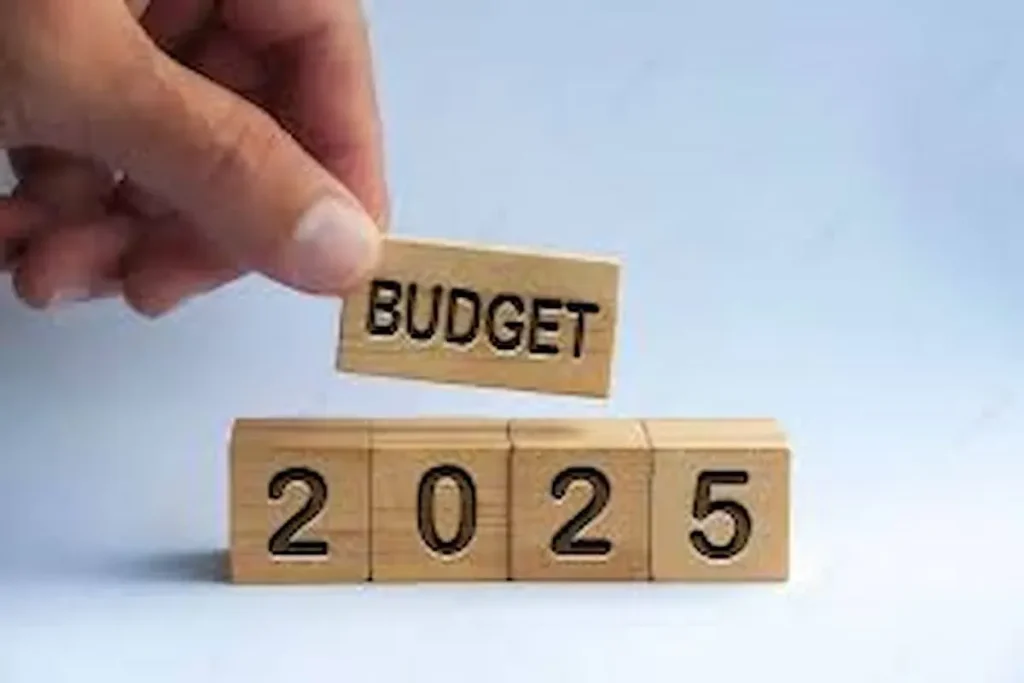The Liberal budget 2025 has set the stage for an ambitious financial strategy under the leadership of Mark Carney, allocating a staggering $130 billion towards new spending initiatives over the next four years. This comprehensive plan highlights significant investments, notably $18 billion earmarked for defense spending, as Canada aims to meet NATO targets while enhancing national security. Following the recent Canada budget announcement, Carney emphasizes the need for proactive government spending to counter economic challenges posed by the U.S., reflecting a clear commitment to bolster economic integration. While critics express concerns about the projected federal budget shortfall of $225 billion, the Liberals argue that these strategic expenditures can foster economic growth capable of generating up to $200 billion for the national economy. As the discourse around Mark Carney’s spending intensifies, Canadians are left to consider how this fiscal direction will impact their lives in the coming years.
In the 2025 federal budget unveiled by the Liberals, Mark Carney has outlined a transformative spending strategy that promises substantial investments in various sectors, particularly defense and infrastructure. Central to this proposal is the goal to enhance Canada’s economic resilience while also addressing pressing national security concerns. The economic integration plan aims to position Canada favorably against its neighbors, emphasizing cooperation and growth across provinces. Despite the looming prospect of a federal budget shortfall, the government maintains that these expenditures are essential for fostering a robust economy and ensuring comprehensive services for Canadians. As discussions unfold, the implications of this significant budget plan will undoubtedly resonate across the nation, prompting debates on fiscal responsibility and service delivery.
Understanding the Liberal Budget 2025: Investing in Canada’s Future
The Liberal Budget 2025, spearheaded by Mark Carney, has made headlines with its ambitious plan to invest $130 billion in new initiatives over the next four years. This substantial financial commitment is characterized by strategic allocations aimed at bolstering national defense, fostering economic integration, and ensuring the advancement of social programs. Among the noteworthy initiatives is the $18 billion earmarked for defense spending, which includes vital capital investments in military equipment and infrastructure, reflecting Canada’s commitment to meet NATO guidelines.
In addition to defense, the budget aims to enhance internal trade corridors with a robust investment of $5 billion, facilitating smoother movement of goods across the nation. This economic integration plan is anticipated to not only improve efficiency but also significantly contribute to the country’s GDP by boosting the economy by an estimated $200 billion. Carney’s approach emphasizes a united economy where Canadians can pursue opportunities across provinces, highlighting the necessity of addressing both infrastructure and operational shortcomings.
Defending the Investments: Carney’s Vision for National Defense
One of the central tenets of Mark Carney’s budget proposal is the increase in defense spending, which aims to elevate Canada’s military investment to the NATO target of two percent of GDP by 2030. This commitment is crucial, especially in light of rising global tensions and the perceived need for military readiness. The allocation of $18 billion reflects a significant shift in the government’s focus towards national security, signaling a proactive stance in defense against challenges posed by international dynamics.
Moreover, the strategic allocation of $850 million for capital investment in modern military equipment, such as icebreakers, underscores a commitment not only to defense but also to improving Canada’s operational capabilities in its vast northern territories. Such expenditures point towards a comprehensive defense spending strategy that, while criticized by some, is heralded by the Liberals as essential for maintaining sovereignty and responding effectively to threats.
Economic Integration Plan: The Path Towards a Unified Canada
The Economic Integration Plan featured in the Liberal Budget emphasizes the necessity of coalescing Canada’s diverse geographic and economic landscapes. By dedicating $5 billion to developing internal trade corridors, the government envisions a cohesive strategy that dismantles barriers to commerce and empowers Canadians to engage in a dynamic employment market, irrespective of their location. This initiative is critical in addressing regional disparities and fostering an environment of equitable opportunity throughout the nation.
The integration plan aims to enhance the flow of goods and services, which could catalyze local economies, ultimately contributing to a stronger national GDP. By facilitating trade and increasing access to markets, the government hopes to generate an estimated boost of up to $200 billion for the economy. This holistic approach is part of a broader commitment to ensure that every Canadian can contribute to and benefit from economic growth.
Addressing Federal Budget Shortfalls: The Financial Balancing Act
As the Liberals propose substantial investments totaling $130 billion, questions loom regarding the anticipated federal budget shortfall of $225 billion. This potential deficit raises critical concerns about fiscal responsibility and long-term economic health. The absence of a clear timeline for achieving a balanced budget contrasts sharply with the ambitious spending goals set forth in the Liberal platform. Mark Carney’s strategy to balance the operating budget while stimulating growth through targeted investments shows a dual focus on immediate economic impacts and future financial sustainability.
To counterbalance the anticipated shortfall, the Liberal platform suggests revenue infusions from increased penalties and fines, alongside a one-time $20 billion revenue boost from retaliatory tariffs against the U.S. This innovative approach reflects a commitment to ensuring that the burden of funding does not rest solely on taxpayers, but instead capitalizes on enforcement mechanisms to support government spending. However, critics are apprehensive about the implications of relying on these measures, arguing that such dependency could lead to larger deficits in future fiscal years.
Investing in Social Equity: A Commitment to Education and Health
The Liberal Budget 2025 also encompasses significant investments aimed at promoting social equity and enhancing the quality of life for Canadians. With a focus on gender and equity-related expenditures, the government has committed $160 million to permanently sustain the Black Entrepreneurship Program and allocated $400 million towards a new IVF program. These investments are reflective of the Liberal party’s dedication to addressing systemic inequities and empowering marginalized communities.
Furthermore, the $2.5 billion allocated for infrastructure projects in Indigenous communities embodies a commitment to reconciliation and enhancing access to essential services. These social programs supplement existing initiatives related to child care, dental, and pharmacare, collectively creating a robust safety net for Canadian citizens. The Liberals maintain that a budget reflecting these priorities is vital for fostering a more just and equitable society.
Trade Conflicts and Their Economic Implications
Recently, Mark Carney has signaled a willingness to engage in trade conflicts, particularly concerning tariffs imposed by the U.S. This decision is indicative of a broader strategy aimed at protecting Canadian interests amidst increasing international tensions, especially under the leadership of President Donald Trump. While the projected influx of $20 billion from retaliatory tariffs is earmarked for supporting workers and businesses, there remains a palpable concern regarding the long-term impacts of these trade disputes on the Canadian economy.
The approach to tariffs emphasizes a dependency on external factors and poses risks to the sustainability of funding for the proposed budget initiatives. Maintaining a balanced budget amidst potential trade wars is a challenge that Carney will need to navigate carefully, as prolonged tariff conflicts could hinder economic growth and complicate efforts to stabilize the federal budget.
Budgeting for Transparency: A New Approach to Fiscal Management
Mark Carney’s proposal includes a significant overhaul of the current budgeting system aimed at enhancing transparency in how expenditures are categorized and reported. By distinguishing between operational spending and capital investments—such as infrastructure and military enhancements—the Liberal platform seeks to provide a clearer picture of where taxpayer money is being allocated. This progressive approach is essential not only for internal review but also for public trust in government financial management.
The introduction of capital-based budgeting has historical precedents, notably seen in Alberta under Premier Alison Redford. By promoting clarity about capital formation and expenditures, the Liberal government aspires to foster an environment where citizens can hold the government accountable. This strategic shift towards transparency is positioned as an essential component of responsible fiscal governance, directly addressing concerns raised by opposition leaders regarding potential cuts to essential services.
Opposition Views: Critiques of the Liberal Spending Plan
Opposition leaders are vocal about their critiques of Mark Carney’s spending proposals, with NDP Leader Jagmeet Singh expressing deep concerns that the budget could lead to cuts in essential services for everyday Canadians. Singh argues that while the government proposes vast sums for new initiatives, such spending could ultimately be offset by reductions in operational budgets that jeopardize healthcare and other critical social services. The fear of austerity is prevalent among those skeptical of Carney’s fiscal strategies.
Conservative Leader Pierre Poilievre has similarly taken issue with the notion of increasing expenditures, warning that Carney’s plan could further exacerbate inflationary pressures already faced by Canadians. His contention is that the proposed deficits, larger than those of previous administrations, could lead to increased costs of living, further burdening families and individuals. These critiques underscore a growing divide in Canadian politics regarding fiscal policy and the implications of federal spending in the context of economic stability.
Looking Ahead: The Liberal Strategy for Fiscal Responsibility
Looking toward the future, Mark Carney’s strategy aims to cultivate a sustainable fiscal environment through disciplined financial management and strategic investments. By pledging to limit the growth of operating expenses to two percent annually, Carney presents a framework intended to balance ambitious social and economic initiatives with fiscal prudence. The expectation of generating a slight operating surplus by the 2028-29 fiscal year illustrates a cautious yet optimistic viewpoint on federal finances.
However, implementing such a strategy will require navigating complex economic landscapes and external pressures, notably from international trade relations. The combination of targeted investments and careful budgeting represents an ongoing dialogue about the role of government in fostering economic resilience. How the Liberal Party reconciles these goals with the real challenges of maintaining public trust and managing fiscal responsibilities will undoubtedly shape the narrative surrounding Canada’s economic future.
Frequently Asked Questions
What are the key points of the Liberal budget 2025 announced by Mark Carney?
The Liberal budget 2025, announced by Mark Carney, includes $130 billion in new spending over four years, with major allocations for defense spending, economic integration, and social programs. Key highlights include $18 billion for defense, $6.8 billion for nation-building, and commitments to various social initiatives, although no timeline for balancing the federal budget has been provided.
How will the Liberal budget 2025 impact defense spending in Canada?
The Liberal budget 2025 includes a significant increase in defense spending amounting to $18 billion, aimed at meeting NATO’s target of two percent of GDP by 2030. This budget allocates funds for new military equipment and internal trade corridors to strengthen national security and economic resilience.
What measures are included in the Liberal budget 2025 for economic integration in Canada?
The Liberals propose an economic integration plan in the budget 2025, which includes $5 billion for enhancing internal trade corridors, aiming to boost the economy by facilitating free movement of goods and services across the country. This initiative forms a cornerstone of the $130 billion investment strategy.
What is the projected federal budget shortfall resulting from the Liberal budget 2025?
The projections from the Liberal budget 2025 anticipate a federal budget shortfall of approximately $225 billion, attributed to increased spending initiatives. Some offsets expected include increased penalties for economic offenses and a one-time revenue infusion from tariffs.
What initiatives in the Liberal budget 2025 focus on social equity?
Mark Carney’s Liberal budget 2025 prioritizes social equity, allocating funds such as $160 million to make the Black Entrepreneurship Program permanent, $400 million for an IVF program, and $2.5 billion for Indigenous infrastructure, all aimed at promoting gender and equity-related programs.
How does the Liberal budget 2025 address the issue of balancing the federal budget?
The Liberal budget 2025 does not set a specific timeline for achieving a balanced federal budget. However, it anticipates a modest surplus of $220 million in the operating budget by 2028-29, reflecting an intention to manage growth in operating expenses while maintaining social and provincial support.
What are the implications of Mark Carney’s Liberal budget 2025 on the cost of living for Canadians?
The implications of the Liberal budget 2025 on the cost of living are debated. Critics, including Conservative Leader Pierre Poilievre, argue it could exacerbate inflation by increasing deficits, while supporters claim it may provide necessary investments in social programs and infrastructure to ultimately benefit Canadians.
What criticisms have been raised regarding the Liberal budget 2025?
Critics such as NDP Leader Jagmeet Singh argue that the Liberal budget 2025 includes significant cuts to essential services for Canadians. They express concerns that the operating cuts proposed may hinder the delivery of vital services like healthcare, amidst an already challenging economic environment.
| Key Point | Details |
|---|---|
| New Spending Allocation | $130 billion over four years without a timeline for balancing the budget. |
| Defense Spending | $18 billion including $850 million for new equipment. |
| Economic Integration Investment | $6.8 billion for nation-building and $5 billion for internal trade corridors. |
| Shortfall Projections | Projected $225 billion shortfall supported by penalties and tariffs. |
| Budget Goals | Aim for a $220 million surplus by 2028-29 and limit expense growth to 2%. |
| Criticism | Opposition leaders raise concerns about cuts and inflation. |
Summary
The Liberal budget 2025 outlines a plan to allocate a substantial $130 billion in new spending over the next four years. However, it notably lacks a clear timeline for achieving a balanced budget. With significant investments in defense and economic integration, this budget aims to stimulate growth, despite forecasts of a considerable budget shortfall. Critics from opposing parties have raised alarms over potential service cuts and the effects on inflation. Overall, the Liberal budget 2025 seeks to drive economic change while facing scrutiny regarding fiscal responsibility.




